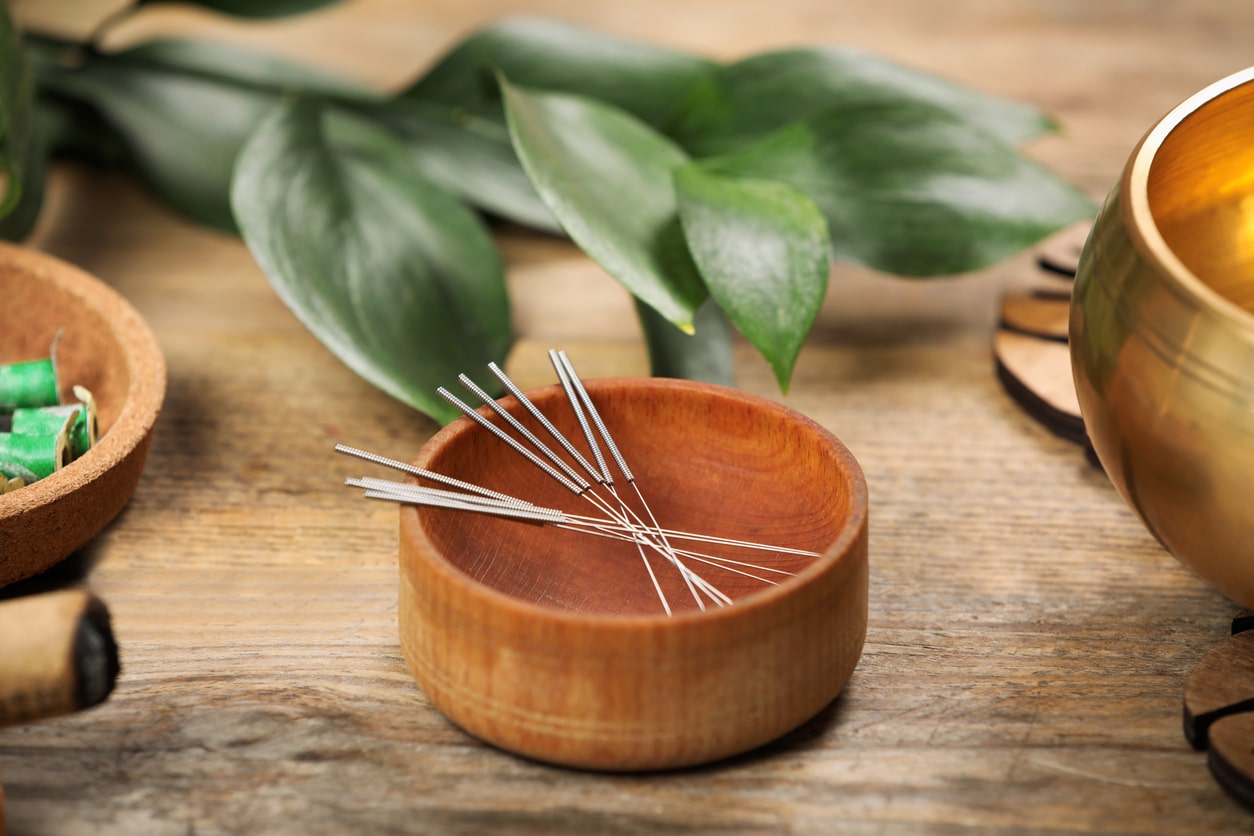Written by: Dr. Wanda Duong, Doctor of Acupuncture, R.Ac, B.Sc, Dip. TCM and Natural Nutrition
Acupuncture, an ancient practice rooted in Traditional Chinese Medicine (TCM), has been used for thousands of years to address a variety of health concerns, especially pain. This technique involves carefully inserting fine needles into specific points on the body. While its origins are deeply traditional, modern research is shedding light on how acupuncture works to alleviate pain and improve well-being.
According to TCM, acupuncture revolves around “Qi” (“chee”), a vital energy flowing through pathways called meridians. These pathways are believed to connect the body’s organ systems and maintain balance (homeostasis) between opposing forces that are categorized into Yin and Yang. When the flow of Qi is disrupted, it can result in pain or illness. Acupuncture helps by restoring this balance and promoting the smooth flow of Qi. Although this traditional explanation may sound mystic, modern science offers a clearer understanding of acupuncture’s benefits, particularly for pain management.
Scientific studies have revealed several ways acupuncture can help reduce pain:
Nerve Stimulation
When needles are gently placed at specific points, they stimulate nerves in the skin and muscles. These nerves send signals to the brain and spinal cord, activating the body’s natural pain-relief systems. This process often creates a tingling, radiating, heavy, or pulling sensation which is linked to acupuncture’s therapeutic effects.
Release of Natural Painkillers
Acupuncture prompts the release of the body’s own pain-relieving chemicals, including substances known as endogenous opioids, which act similarly to pain medications by targeting opioid receptors in the brain and spinal cord to ease discomfort. Additionally, acupuncture boosts the release of neurotransmitters like serotonin and norepinephrine, which help regulate both pain and mood.
Engaging the Body’s Pain Control System
It may also engage a natural process called diffuse noxious inhibitory controls (DNIC). This system reduces the perception of pain by blocking pain signals in the central nervous system.
Reducing Stress and Tension
Stress, which often aggravates pain, can also be eased through acupuncture. By influencing areas of the brain like the hypothalamus and reducing stress hormones such as cortisol, acupuncture helps the body relax, indirectly alleviating pain and enhancing overall well-being.
Stimulating Adenosine Receptors
And finally, during treatments, a natural compound called adenosine is activated. This compound plays a key role in reducing pain and inflammation by binding to specific receptors in the body.
Some critics claim acupuncture works because of the placebo effect—the belief that a treatment will help. However, studies comparing real acupuncture to “sham acupuncture” (where needles are placed in non-therapeutic areas) consistently show that real acupuncture delivers greater pain relief. This demonstrates that its effects go beyond psychological benefits.
Acupuncture is widely used to manage a variety of pain-related conditions, including chronic back, neck, and shoulder pain, migraines and tension headaches, osteoarthritis, and pain and nausea following surgery. Many people find that acupuncture works best when combined with other treatments, creating a comprehensive plan for managing their pain and improving overall health.
Studying acupuncture scientifically poses challenges due to its individualized approach and varied techniques. However, continued research is uncovering new insights into how acupuncture interacts with the body’s systems, providing a clearer picture of its effectiveness.
Acupuncture offers a unique blend of ancient wisdom and modern science, providing a natural, drug-free way to manage pain. By stimulating nerves, releasing natural painkillers, and activating the body’s pain-control systems, acupuncture is an effective and holistic option for addressing both acute and chronic pain. While there’s more to learn, acupuncture remains a powerful tool for enhancing quality of life and supporting the body’s ability to heal.
Are you looking to experience acupuncture yourself? Contact AST Westman Village to book an appointment with Dr. Wanda Duong, to learn more.
Sources:
Audette, Joseph F., and Angela H. Ryan. "The role of acupuncture in pain management." Physical Medicine and Rehabilitation Clinics of North America, vol. 15, 2004, pp. 749-772, doi: 10.1016/j.pmr.2004.04.009.
Chen, Lucy. "The Role of Acupuncture in Pain Management." Acupuncture in Modern Medicine, IntechOpen, 2013, http://dx.doi.org/10.5772/.
Ondrejkovičová, Alena, et al. "Why acupuncture in pain treatment?" Neuroendocrinology Letters, vol. 37, no. 3, 2016, pp. 163–168.



